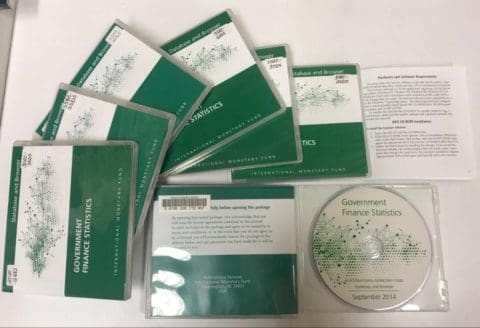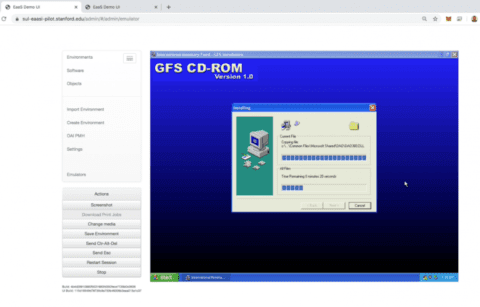Stanford University Libraries is thrilled to be participating in the Emulation-as-a-Service Infrastructure project (EaaSI). This is an effort to build a distributed network for sharing and preserving software led by Yale University Libraries with the generous support of the Andrew Mellon Foundation and the Andrew Sloan Foundation. Our motivations for joining this project are many. As an academic research library geographically located in one of the world’s premier technology hubs our institution has heavily invested in building research collections that document the history of science and technology.
To date the Stanford Emulation as-a-service infrastructure (EaaSI) team has gathered nineteen use cases and this number is growing as we continue our outreach to different schools, departments and disciplines on our campus. Our use cases are diverse and include interactive digital publications from the Stanford University Press, large collections of games and productivity software, and software applications developed by our faculty and students for teaching and research. It’s a large and heterogeneous group of use cases, each providing a unique set of preservation and access challenges that we hope the EaaSI project can begin to address. For this particular post I’ll focus on just one of our use cases, a series of CD-ROM and DVD-ROMs compiled and distributed by the International Monetary Fund (IMF).

This IMF datasets provide social scientists with access to Government finance statistics via a custom-built browser application that runs on legacy Windows operating systems (Window 95 through Windows Vista). Access to this data currently requires researchers to physically visit our Social Science Data Center (https://ssds.stanford.edu) in Green Library. It also requires library staff in the Center to maintain old, unsupported, and unnetworked computing systems. These operating systems are no longer receiving security updates and our librarians are eager to get out of the business of maintaining old, unsupported operating systems and hardware.
Our first task with this collection was to create ISO disk images and photographs of the optical media. Each of the IMF CD-ROMs includes an instruction booklet that specifies what flavor of Windows is required to emulate each disc. This is crucial information we need for creating a functioning emulation environment in EaaSI. We then began test loading these objects into our local EaaSI environment and associating each piece of media containing the IMF software with a Windows base operating system provided by Yale University Library. These are base operating system environments that have been pre-configured by Yale’s EaaSI staff and published to the network for use by other emulation nodes. Thank you Yale University Library! I’ll recap why having these pre-configured emulation environments available via the network is valuable later in the post.
Our next step was to boot up the operating system we have associated with each CD-ROM, install the IMF software application and then safely shut down the operating system. Shutting down the environment is a prerequisite to saving the changes we’ve made to the base operating system. The EaaSI interface provides us with a choice to either create a revision to the original base system or to save our installed IMF software and base environment as a new object.

Our testing to date has shown that Emulation-as-a-Service is a viable method for improving access to CD-ROMs distributed by the International Monetary Fund. For our IMF use case we have been able to reuse a base operating system provided by Yale University Library. EaaSI emulation nodes are able to share and reuse software across the network. This is a huge benefit as it allows us to begin to share software and pre-configured emulation environments with other institutions. It also allows us the ability to leverage the work of our peer institutions. In our IMF example we didn’t have to begin with creating our own base environments in the EaaSI application as we could reuse the work of others.
The Stanford team has also begun trying to create our own base environments in EaaSI. This is not a trivial undertaking and requires a significant investment in time and effort just to set up a single environment. Being an EaaSI node allows us to leverage the work of our peer institutions. We are already benefiting from the work of our EaaSI peers and are eager to contribute our own local expertise to the effort. I hope to report back soon on our efforts to create our own base environments in Emuation-as-a-Service soon. In the meantime for those that are interested in seeing how we emulated our IMF use case we’ve created a demonstration video that outlines how it was done.